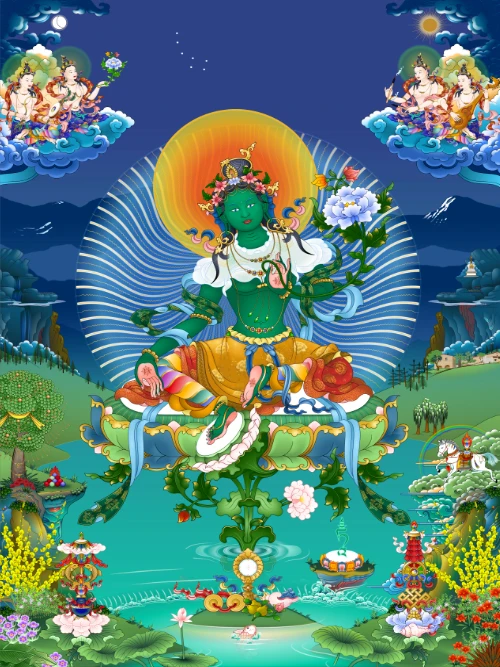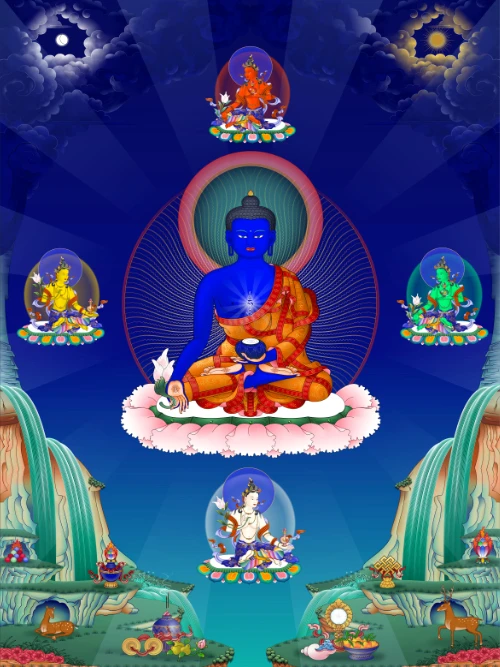White Tara: the Mother of Long Life and Compassion
In the luminous pantheon of Buddhist enlightened beings, White Tara stands as a radiant embodiment of compassionate protection, healing, and longevity. Often referred to as "The Mother of all Buddhas," she represents the maternal aspect of enlightened compassion—nurturing, protecting, and extending life so that beings may have the opportunity to achieve liberation.
White Tara’s iconography is a study in grace and stillness. Seated in the full lotus posture on a moon disc and lotus throne, her meditative poise reflects inner tranquility and profound wisdom. Her seven eyes—on her face, hands, feet, and forehead—represent her omniscient awareness, seeing the suffering of all beings across time and space. Her right hand rests in the gesture of granting boons (varada mudra), offering blessings of health and longevity, while her left hand holds a blue utpala flower in the gesture of protection (abhaya mudra), symbolizing purity and fearlessness. Adorned with silks, jewels, and a five-jeweled crown, White Tara embodies the transformation of the five poisons (ignorance, attachment, aversion, pride, and jealousy) into the five wisdoms.

White Tara is renowned as the "Mother of Longevity," associated with practices that promote physical health, mental clarity, and spiritual resilience. Her mantra, "Om Tare Tuttare Ture Mama Ayuh Punya Jnana Pustim Kuru Svaha," is recited to invoke her qualities of compassion and wisdom.

